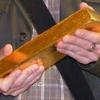I'd luv to know the answers to all of that.... As per Torbati , I wrote him an e-mail regarding my homocysteine levels ; asking him if he knew any relationship between high levels of HCY and NR intake and he replied back telling me he didn't have any knowledge about it and to avoid fats while taking g NR, NO references provided!
Would love to know the answer to this one.
Torbati advised you to avoid eating fat and NR at the same time. Did he give you a reason for this?Perhaps a reference?Apologies to everyone in advance as I'm far from being an expert in field of longevity, but I've trying to educate myself through lotta lurking and reading.
As I skimmed the whole Samuel A.J. trammel's papers and the following statements caught my eyes.
"The ability of milk to bind and preserve the integrity of NR makes dairy products potentially good sources of supplementing NR along with, specially non organic sources"
Will it be advisable to chug down a glass of milk along with NR? As we want it to reach our gut as stable as possible , even though I was recommended by HPN's owner Sean Torbati to avoid fats while taking NR.
"Though current data is highly suggestive that NMN utilization requires dephosphorylation by CD73 to NR or hydrolysis to Nam by CD38"
If CD38 is involved in the process of NMN =>>NAM, why does it get outta hand with age? Will it be such a good idea to inhibit it for the long run as we don't know the role that it plays? What about keeping their levels to a youth stage, so it does what it suppose to do?
CD38 has been implicated in the secretion and function of hormones such as oxytocin and ACTH and may modulate maternal and social behavior and also CD38 plays a key role in the mechanism by which the organism fights bacterial infection... And God knows what else...
Cuz some people are supplementing with quercetin and this is being identified as a Sirt 1 inhibitor along with CD38.In fact, SIRT1 and CD38 have several similarities in their enzymatic and catalytical properties.
http://www.ncbi.nlm....les/PMC2883294/
Wouldn't it be better to use. Apigenin over quercetin?http://www.ncbi.nlm....pubmed/23172919
"NMN depends upon CD38, CD73, and NRK"
Will this explain why Sinclair was able to bring the clock back on those old mice's muscles in such short period of time? I'm guessing that old mouse had high levels of CD38
Because according to the paper it shows that NR superior than NMN and yet we have not seen the results of NMN had in such short period of time.
"NR contributed to the intracellular NAD metabolome more rapidly than NMN and increased NAD+ by more than 2 fold after 24 hours, indicating NR is kinetically superior to NMN"
Regarding the discussion between Bryan and Tom, it looks like NR is superior to NA and NAM at hepatic levels even though NA produced the least increase in hepatic NAD+ but also was 4-6 hours faster than NR and Nam in the kinetics of hepatic NAD+ accumulation. They also used NAAD as biomarker to state that NR is superior , but what's the role of NAAD , is it a pool to raise NAD+ over time?
NR is a superior liver precursor to NAD+ compared to Nam and NA and the increase in NAD+ correlated with NAAD... But is it that superior?
Thoughts?
Honestly speaking I'm doing opposite ( healthy fats though) ramping up my fat intake while ditching most of the unhealthy carbs.
Btw I've found the email, I've attached a screenshot of it, I was also asking him about taking it subligually
"If CD38 is involved in the process of NMN =>>NAM, why does it get outta hand with age? Will it be such a good idea to inhibit it for the long run as we don't know the role that it plays? What about keeping their levels to a youth stage, so it does what it suppose to do?"
My thinking on this one is:that CD38 is not rate limiting in the process and the fact that it is much lower at a younger age supports the idea that the high levels are not needed at leastt for the metabolism.

































 This topic is locked
This topic is locked




















